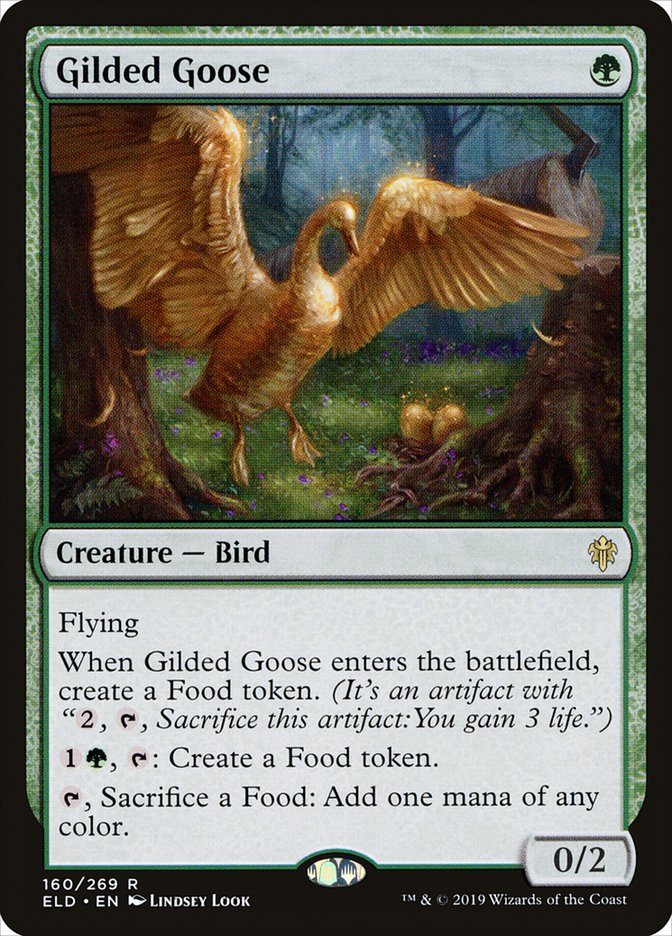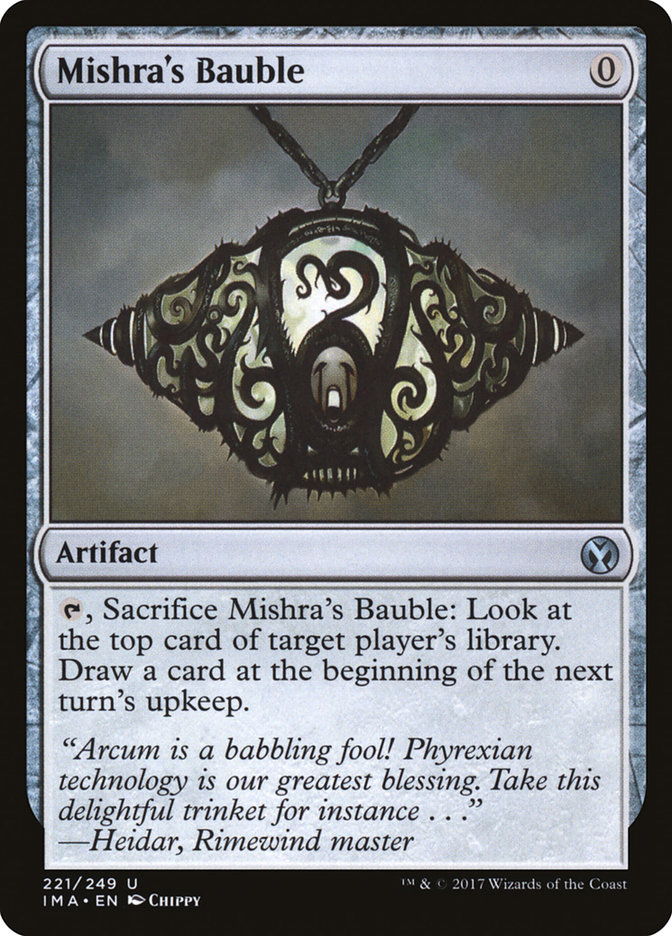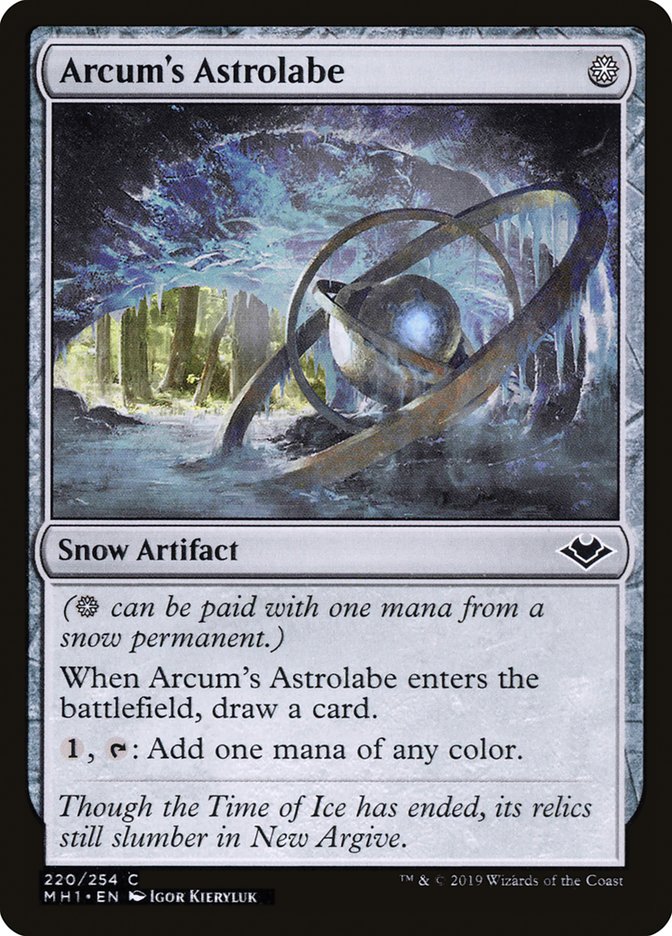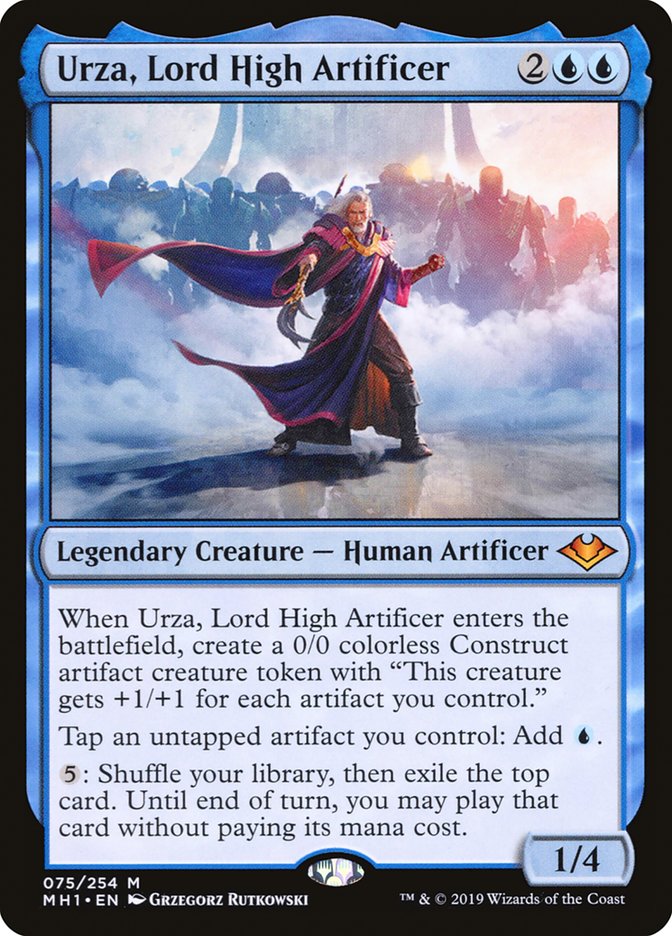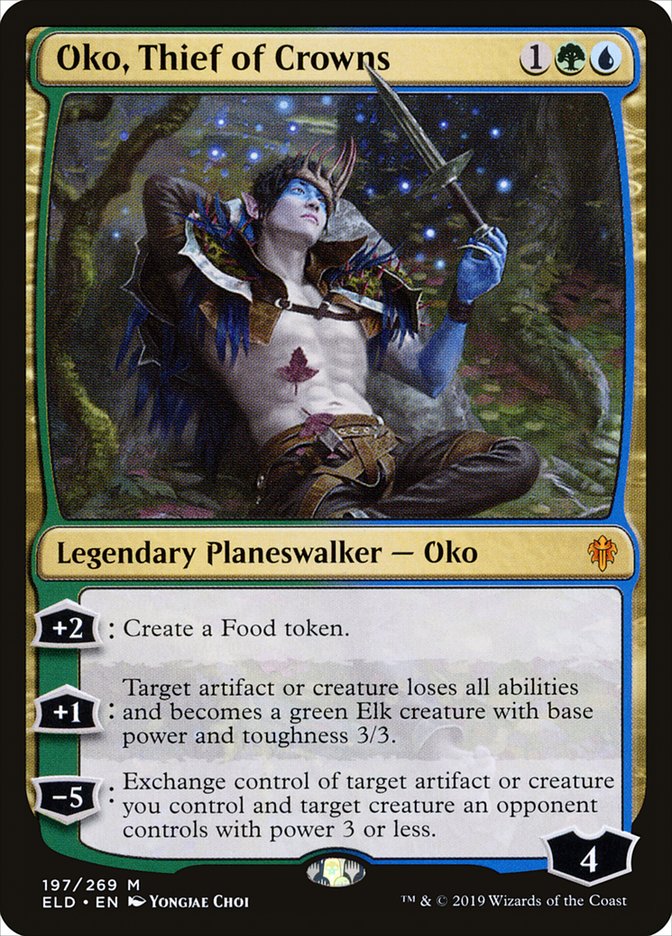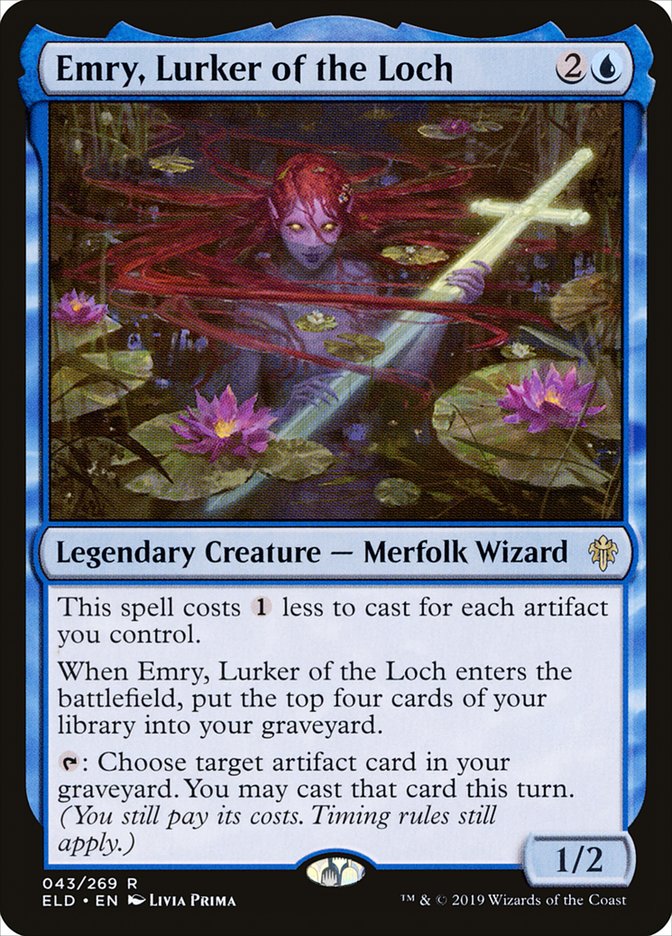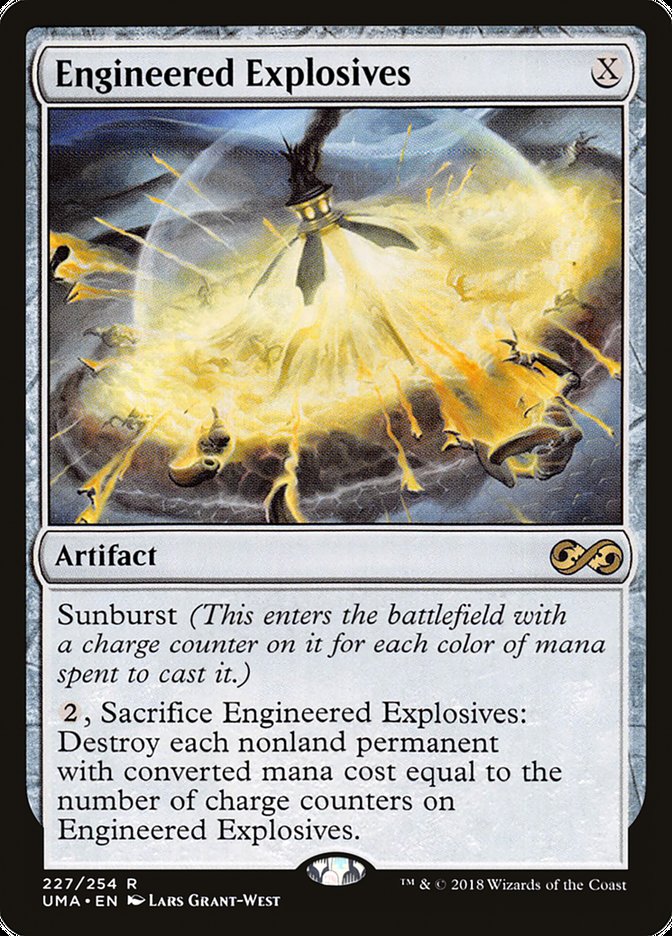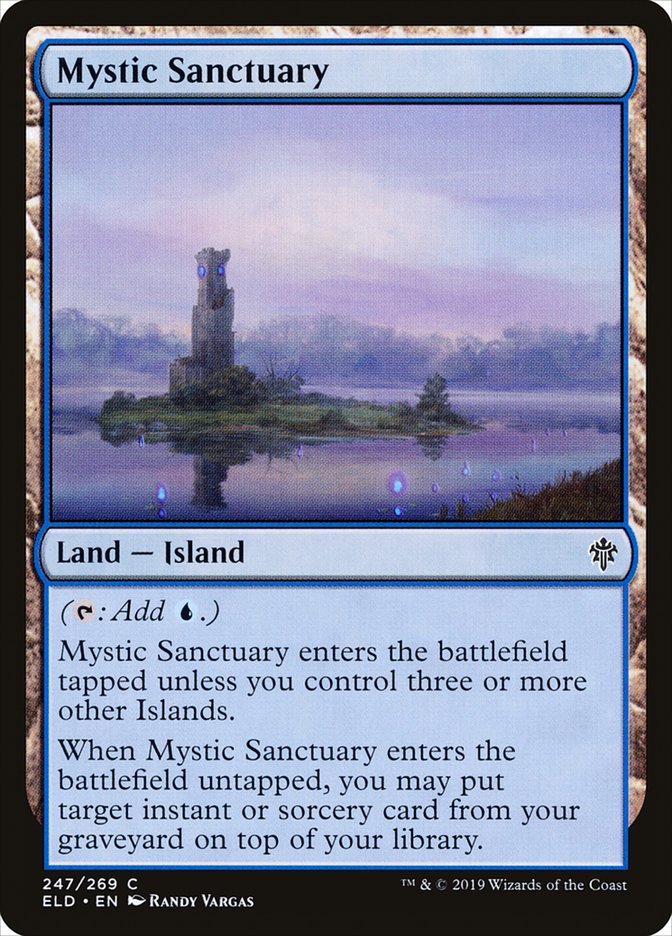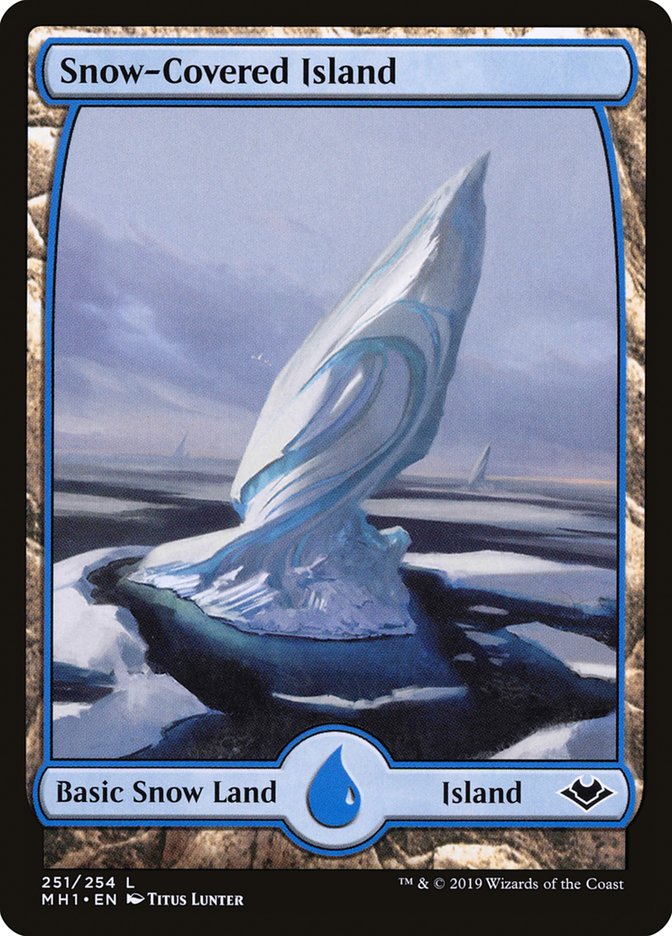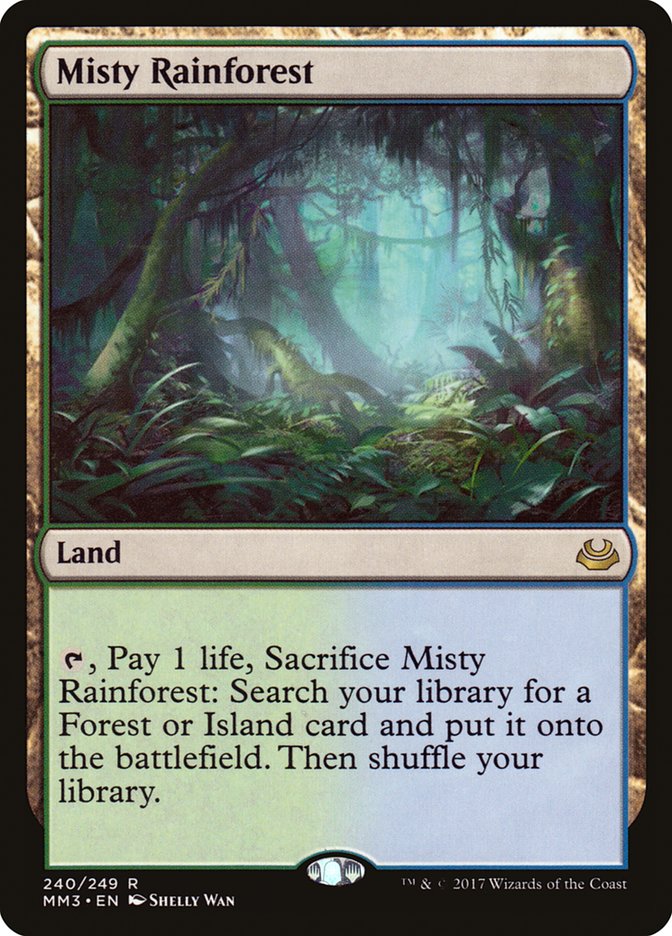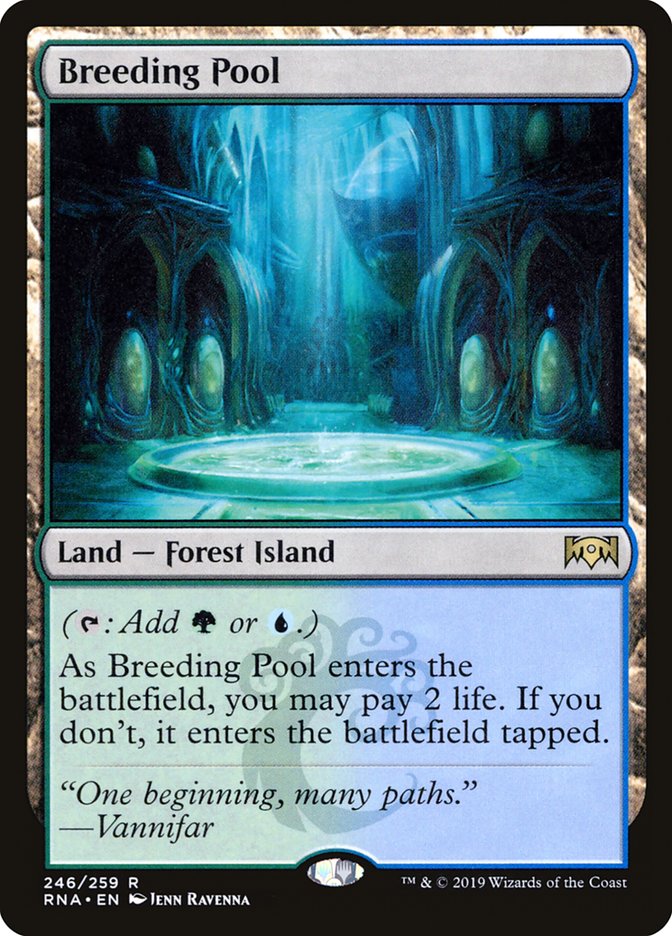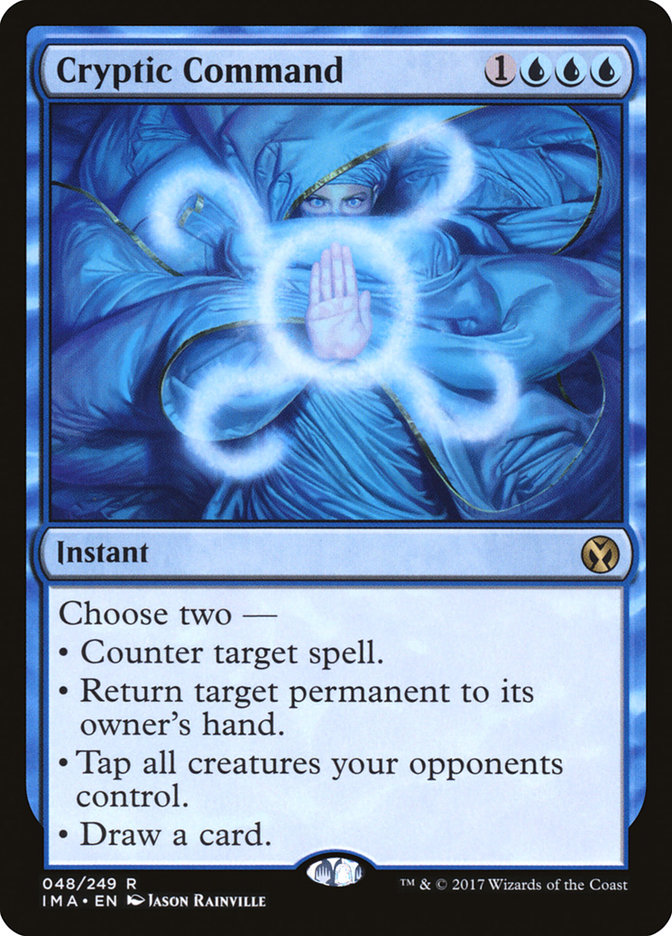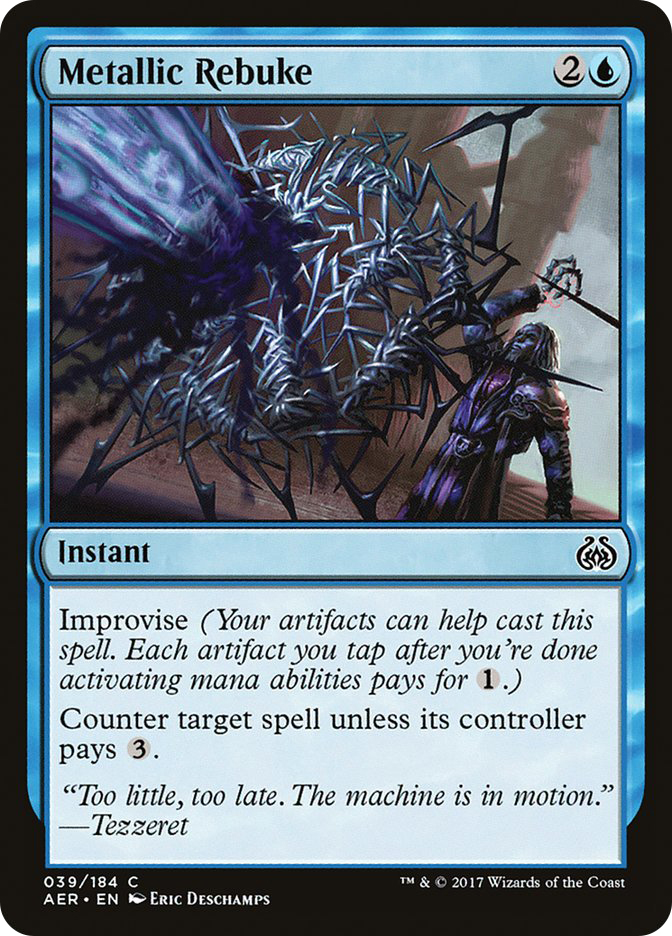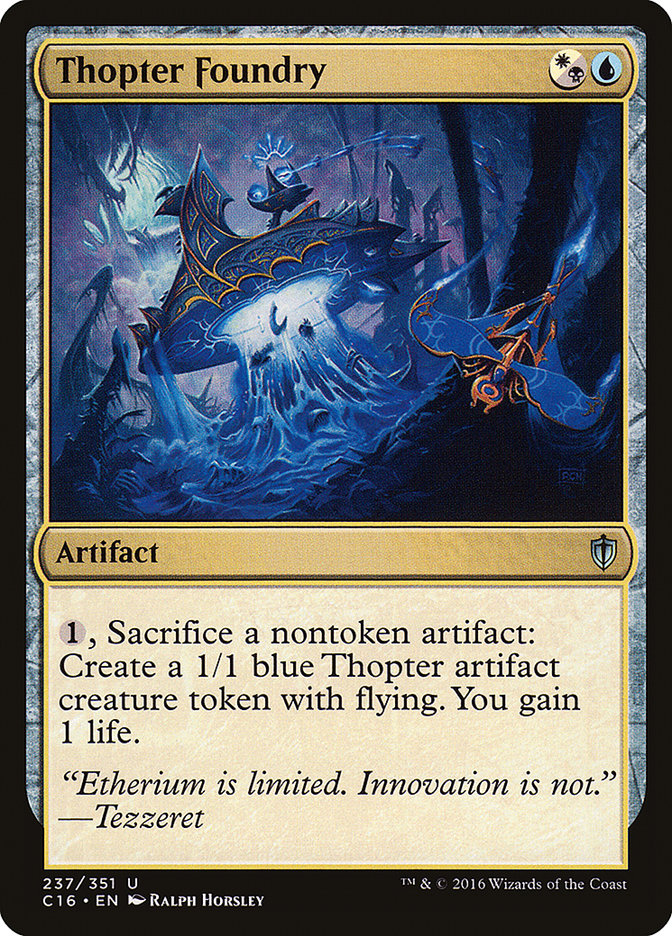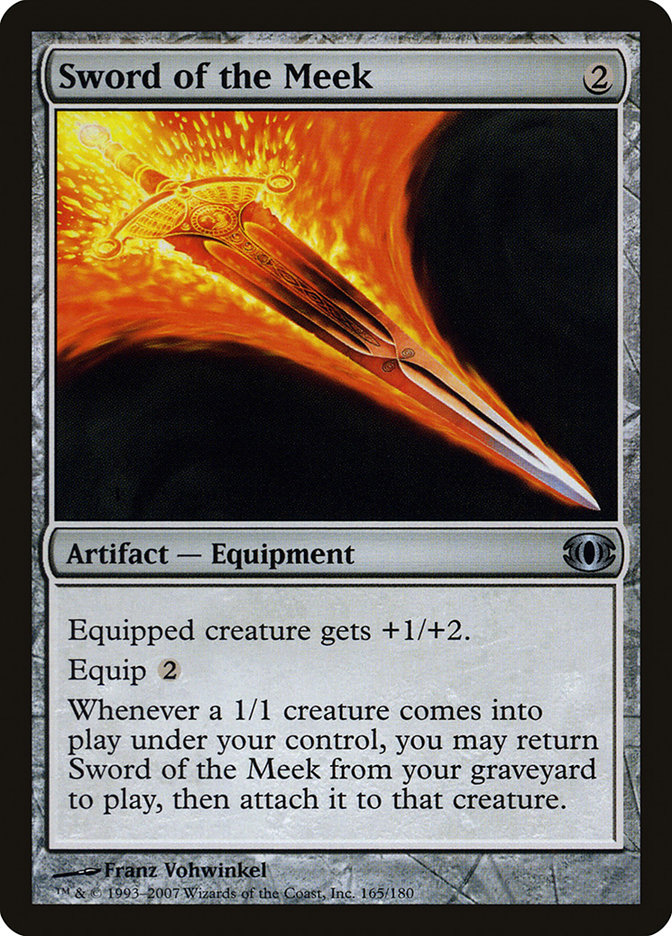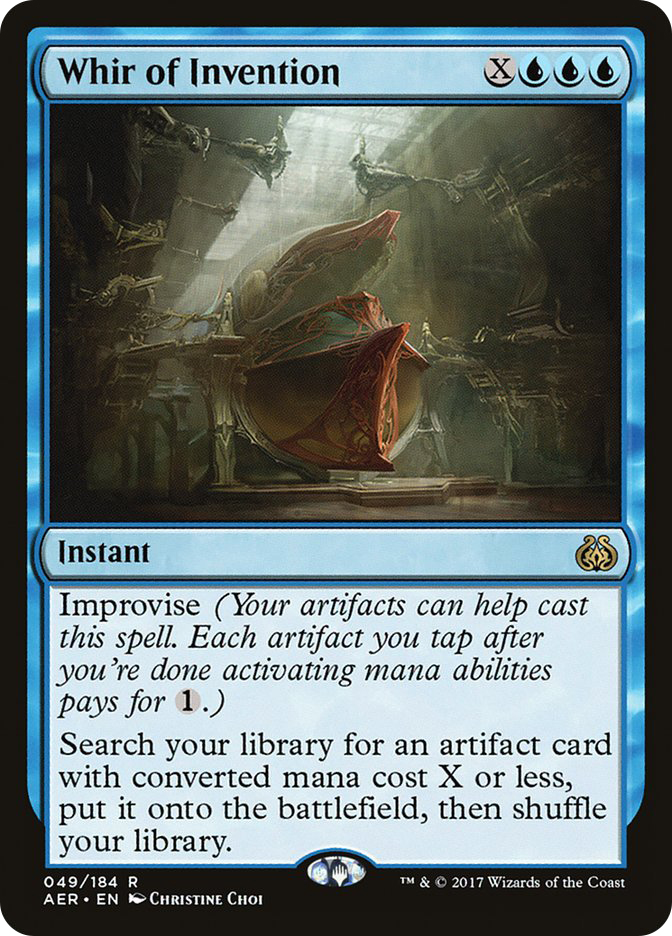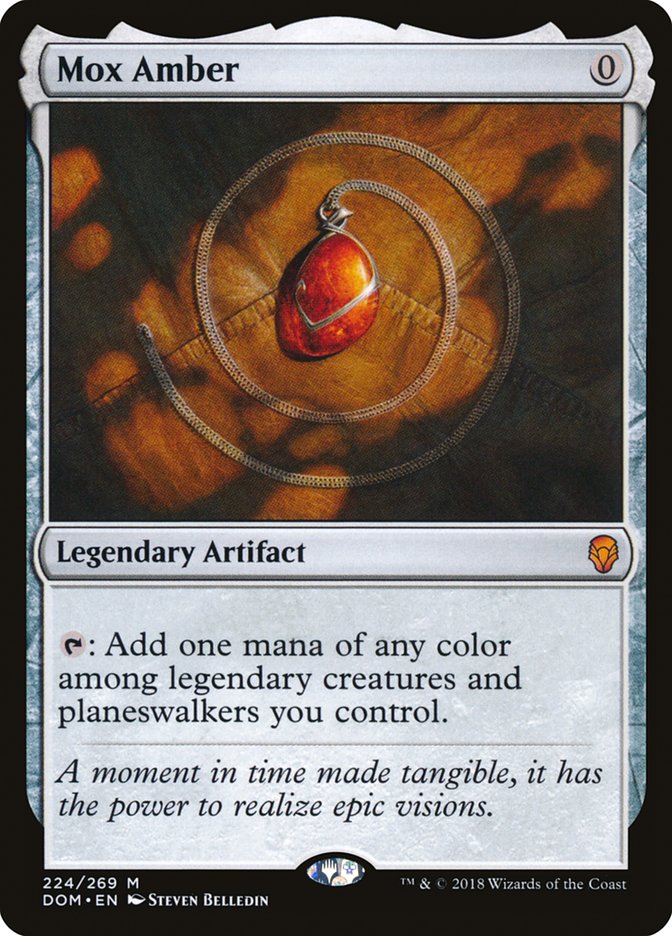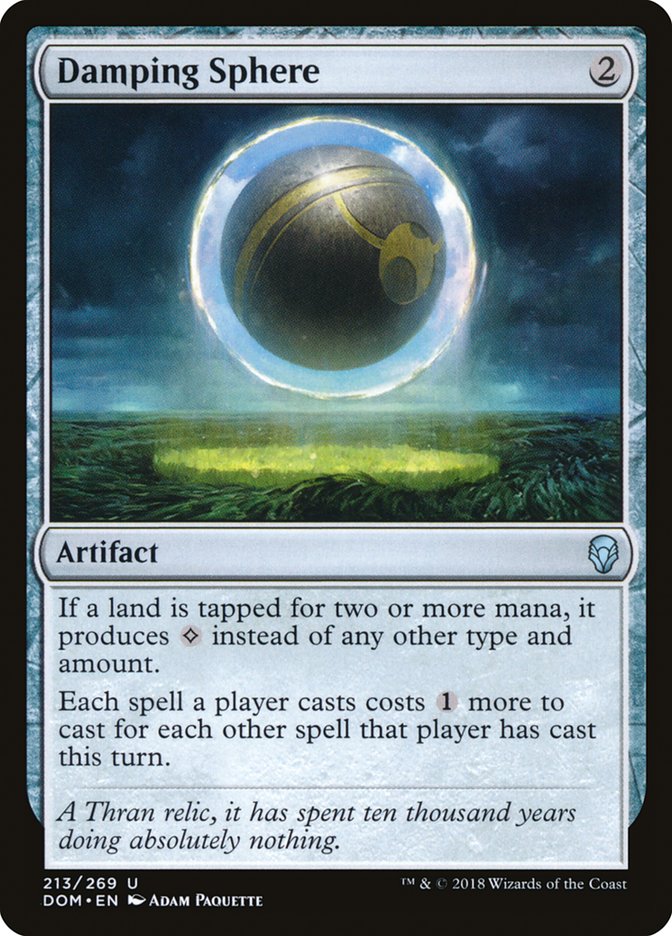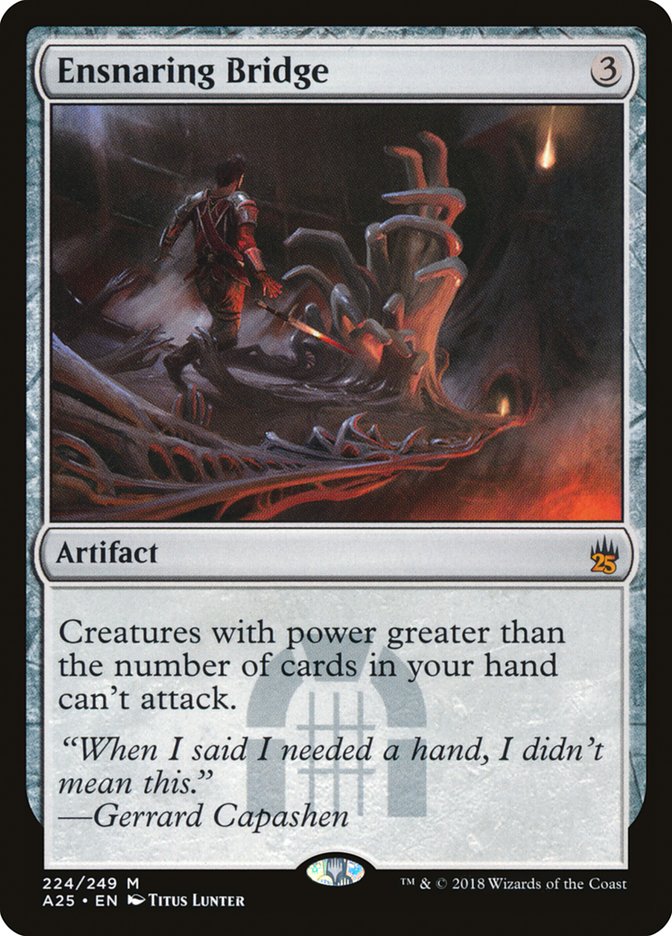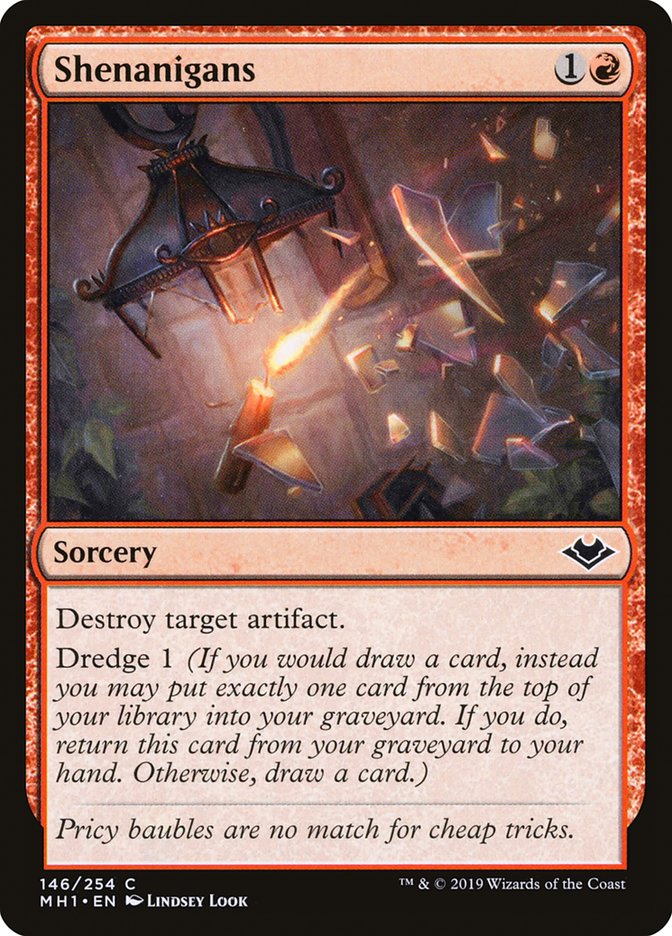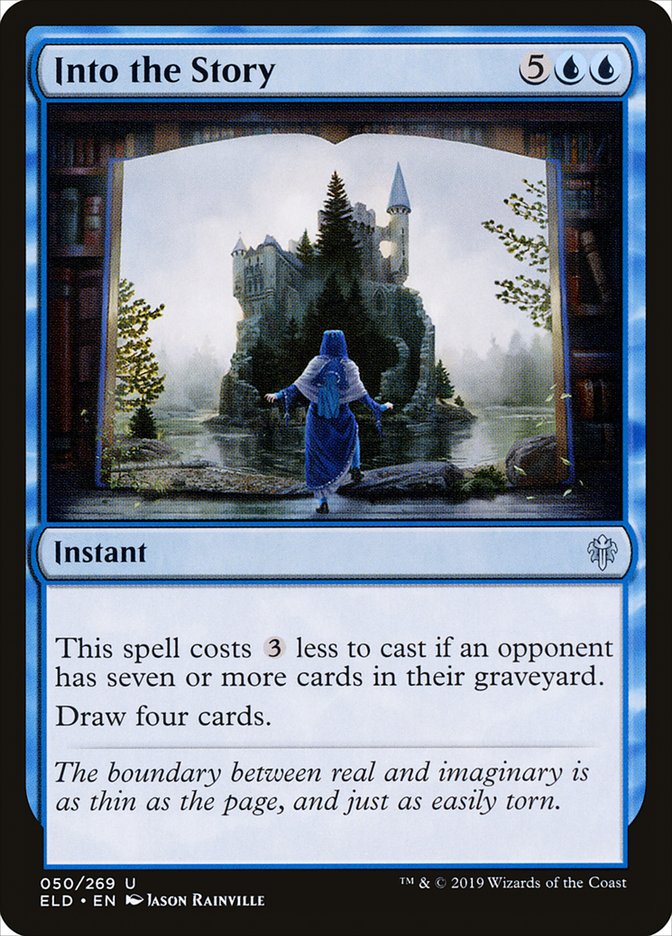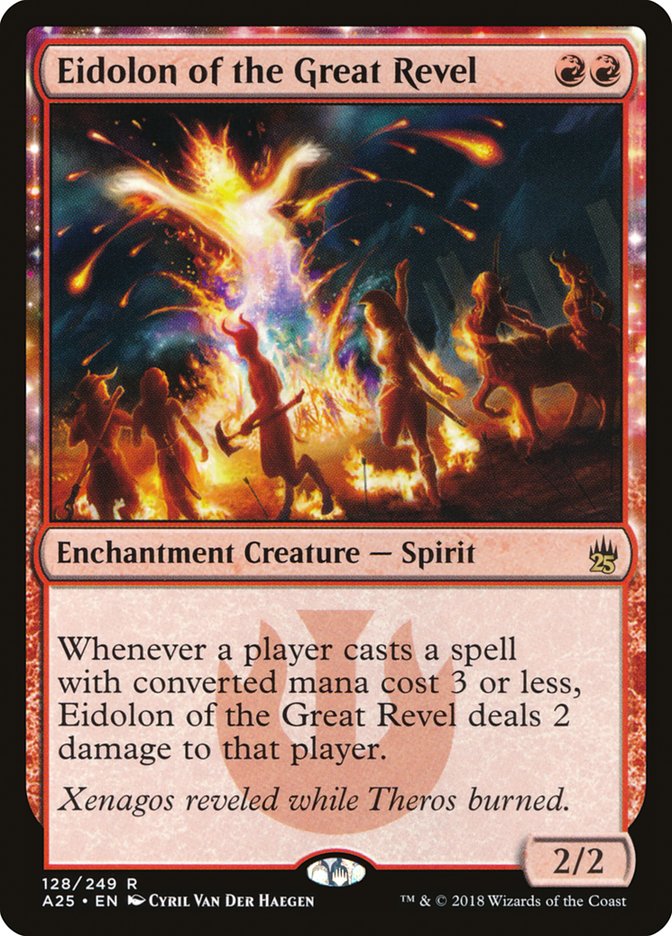At the end of SCG Indianapolis, I talked to Abe Corrigan about how great Oko, Thief of Crowns is, how I wanted to play it in my Urza maindeck, and how well Gilded Goose plays with Mox Opal. In the following weeks, he and the rest of Team Lotus Box worked on tuning and developing the deck that became known as Urza Midrange, despite somehow working itself back around to a deck more reminiscent of Whirza by the time they put up a dominant performance at SCG Atlanta.
The Core
Urza Midrange has the following core:
4 Mox Opal: The power level of a Magic card is difficult to evaluate in a vacuum, and sometimes it’s extremely hard to compare two cards against each other–which card is more powerful, Mox Opal or Primeval Titan? What about when Summer Bloom was legal and the only Mox Opal deck was Affinity?
Regardless of your take on what the literal most powerful card in Modern is, Mox Opal has to be in the conversation, and always has been, and it’s the backbone of every artifact deck. Playing four of these at this point shouldn’t really be a question.
4 Gilded Goose: This, on the other hand, I understand asking questions about, but when sixteen copies made the Top 8 of SCG Atlanta, I believe that was sufficient evidence of the card’s “playability” to silence vocal doubters. The reason the card is so good is that you’re looking for an early mana boost to cast Urza, Lord High Artificer, and then you have huge amounts of mana after it resolves, so the fact that the Goose can only tap for mana once without additional work or support isn’t that large of a cost.
More importantly, in addition to providing an artifact immediately for metalcraft and leaving that artifact on the battlefield if it’s killed, it gives you the ability to tap it to make more artifacts, so if the game stalls and you’re waiting to draw an Urza, you can churn out tokens that will make Urza explosive when you finally find it. On top of all that, the addition of Food to the deck makes the Burn matchup much better, and Burn has traditionally been a relatively effective strategy against Urza decks.
4 Mishra’s Bauble: This is just the cleanest and easiest way to enable early metalcraft for Mox Opal, and also the easiest way to get reliable value off Emry, Lurker of the Loch.
4 Arcum’s Astrolabe: The other easy way to turn on Mox Opal, power up your Urza, discount your Emry, and fix your mana.
4 Urza, Lord High Artificer: The power level of this card shouldn’t really be in doubt at this point. For four mana you get two different extremely threatening bodies, and you typically get back most, all, or more than all of the mana you spent on it by tapping artifacts that you already have on the battlefield for mana once it resolves.
4 Oko, Thief of Crowns: The “core” of this deck is a lot of cards, which leaves very little room for other things, and as a result, sometimes it’s worth trying to trim some core pieces, especially because, as we’ll get to, the “core” involves playing four copies each of five legendary cards, which means you’re virtually guaranteed to draw some redundant legendary spells.
To minimize this, an Oko can be shaved, with the reasoning that drawing two is bad because Oko’s so good that it very rarely leaves the battlefield in the first place. That said, it’s pretty easy to win if Oko’s on the battlefield regardless of whether you have an extra copy in your hand, so you might want to just make it as likely as possible that you draw the first copy.
I don’t really think a discussion of the use, power level, and artifact synergies with Oko should be necessary at this point. I will say that the addition of Oko is what makes the deck Urza Midrange. Previously, Urza typically played as a combo deck because you had a ton of explosive power, but when so many of your cards are dedicated to just getting artifacts on the battlefield, you have minimal room for interaction, so you need to make sure you can end a game quickly.
Oko’s ability to turn your opponents’ creatures and artifacts into Elk gives your deck a lot more disruption and interaction at a very low cost, while offering a built-in way to apply a good amount of pressure. This decreases the need to focus on ending the game in a hurry, which is why we see a minimization of combo elements.
4 Emry, Lurker of the Loch: Emry is basically a one-mana creature that taps to draw a card, which is obnoxiously powerful and can easily take over a game if cast on the first two turns and left unchecked. That said, I include it in the core of the deck because that is how Lotus Box has been building it and they’ve been succeeding with it, but I’m still skeptical.
While I fully acknowledge that Emry’s an unreasonable Magic card and more than powerful enough to justify playing, my concern is that slowly drawing cards over time isn’t very good in this deck because of the aforementioned problem that all of your good spells are legendary. In addition to that, you only get to play so many payoff cards that aren’t artifacts themselves, and Emry is the most fragile option.
While you’re not really behind on mana if your opponent kills your Emry, you’ve still paid the deckbuilding cost of playing tons of artifacts and playing Emry over another card that could reward you for doing that, and if it trades with a Lightning Bolt, your opportunity cost of not having something like a Sai, Master Thopterist or Paradoxical Outcome instead that wouldn’t have traded with a Lightning Bolt, which otherwise isn’t very good against you, is realized.
4 Engineered Explosives: Engineered Explosives is often used as a zero-mana artifact to enable metalcraft, and it’s much worse in that case than Mishra’s Bauble because you can’t get your card back once you have plenty of artifacts on the battlefield, but it has the advantage that it gives your deck an extremely versatile answer to almost anything and some built-in great matchups. This deck plays very few two-mana permanents, so Engineered Explosives is amazing against decks like Jund that play several very important two-mana permanents, and it’s also awesome to have it against other decks that are always bad against the card like Selesnya Hexproof. This is a part of the core that can be shaved, though I personally don’t like doing so.
2 Mystic Sanctuary: This part’s kind of amazing to me, in that I’ve just listed a core of 32 spells that aren’t instants or sorceries, and a lot of people still aren’t playing two Mystic Sanctuaries in their blue decks that are half instants and sorceries. The cost of included Mystic Sanctuary is relatively low in this deck because you want a lot of access to Snow-Covered Islands anyway to cast Arcum’s Astrolabe. You don’t play very many spells you can return with Mystic Sanctuary, but they’re typically very high-impact, and playing two Mystic Sanctuaries means you can search for one even if you have the misfortune of drawing one early.
Mystic Sanctuary is typically only okay in Game 1. Where it really shines is after you’ve sideboarded, when it can give you additional access to your sideboard cards, which can really change how your deck plays, and makes it feel like you have a lot more copies of your sideboard cards than you do.
15 lands that allow you to cast Arcum’s Astrolabe on Turn 1, including Snow-Covered basic lands and fetchlands: It’s important to consistently cast Arcum’s Astrolabe, so I like to make sure I have at least fifteen lands that let me do that. You could potentially get away with fourteen, but I’d try hard not to. I’m happy if I can play a sixteenth, but I’d look to get more value out of my lands before playing a seventeenth.
1 Breeding Pool: You’re playing a Simic deck with a lot of blue fetchlands. It would be malpractice not to have a Breeding Pool in your deck.
This core leaves us with one additional land and nine additional spells to work with.
The Options
The one additional land should be the blue shockland that gets your third color if you have one; otherwise it can be a second Breeding Pool, or you could potentially replace it with a Mox Amber.
Figuring out the last nine spells is where the deck gets interesting.
Team Lotus Box has been consistently playing three Cryptic Command and two Metallic Rebuke for interaction. I personally shied away from Metallic Rebuke, but I think that was a mistake. The first few turns of the game are by far the most important in Modern, and Metallic Rebuke can frequently trade a single mana for an opponent’s entire turn in an exchange that can be decisive to the game. I like only playing a few copies because it’s easy to have a hand that just doesn’t work if you draw two, but it’s a great way to add an extra dimension to a deck that mostly plays on the battlefield.
Cryptic Command locks out a game where you’re ahead, either by countering an important spell or just tapping your opponent’s blockers so you can connect with a giant Construct. It also adds a lot of versatility to the deck, and combined with Mystic Sanctuary does a lot of heavy lifting when it comes to making sure the deck isn’t too one-dimensional.
In Atlanta, they rounded out their deck with one Thopter Foundry, one Sword of the Meek, and two Whir of Inventions, and replaced one Engineered Explosives with an Aether Spellbomb for additional flexibility with Whir of Invention and Emry, Lurker of the Loch, giving them the following decklist:
Creatures (12)
Planeswalkers (4)
Lands (19)
Spells (25)

Previously, this last portion of the deck had included cards like Witching Well, Tireless Tracker, Thoughtcast, and Mox Amber.
I like the idea of including more threats in this space. If it’s all card drawing or card selection, you exacerbate your legendary issue. Adding another dimension is nice here, but I’m not sure that Thopter Foundry / Sword of the Meek / Whir of Invention is the best way to do it.
First off, I want to acknowledge the dominant performance we saw in Atlanta, but note that that shouldn’t be taken as proof that this is the perfect build of the deck. The reality isn’t that this build outperformed other, different takes on Urza decks. Most of the people in the tournament who were going to play this archetype talk to each other and work on the deck together, and decided that this is what they thought the best version was.
These are good players with byes in the tournament, playing powerful cards that work well together, so it’s not surprising that they did very well. That said, they’ve been winning with every variation of this deck in other tournaments, and I suspect their flex slots could have been chosen basically at random from a pool for twenty or so cards and they’d have had similar results.
These decks were listed as “Whirza,” but I’d argue that’s a mischaracterization of the important part of what’s going on with these decks, and that they have a lot more in common with their other Urza Midrange decks that don’t include Whir of Invention than they do with the Urza decks that have several copies each of Sword of the Meek and Thopter Foundry with Goblin Engineer in addition to Whir of Invention to make the combo more consistent.
The combo is an afterthought in these decks, and while I like adding an extra dimension to them, Thopter Foundry and Sword of the Meek are much worse draws when you can’t find the other half of the combo, and when you play fewer cards that let you do that, it’s a lot more likely that your Sword of the Meek is basically a dead draw, so lightly splashing the combo certainly isn’t all upside.
Personally, I think it’s foolish not to play at least one Mox Amber in this deck, and I like the second copy. As I mentioned, I want more angles of attack, but I’m not sure what the best way to do that is. Tireless Tracker isn’t bad; that’s roughly the baseline you’re trying to beat in rounding this deck out if you don’t want to play the Thopter-Sword combo. I personally kind of like Wicked Wolf. “Wicked Wolf is Modern-playable” is certainly more of a hot take than settled science at this point, but the same was true of Gilded Goose a couple of weeks ago.
I tried Walking Ballista and I felt like it was a little too inefficient. There’s a chance Stonecoil Serpent is good enough, since it’s a pretty sweet threat to cast with Emry or power up with Urza, and protection from multicolored is a real ability in Modern, but that’s still very much in the experimental phase.
I still think it’s reasonable to splash white for Spell Queller. I think results with that have been underwhelming, but I’ve felt that way about the other cards in this space as well, so it still might be the best option.
Another option would be to splash red for Ghirapur Aether Grid. I’ve generally felt like this card was too clunky in the past, but it’s nice to have a high-impact card that opposing Okos can’t touch, and it’s a pretty great way to take advantage of extra Food.
The issue with splashing one of these other colors comes when we get to the sideboard.
Team Lotus Box has had consistent success with a sideboard that leans heavily on Damping Sphere and black cards: Thoughtseize, Fatal Push, Collective Brutality, Plague Engineer, Drown in the Loch, and Assassin’s Trophy. You can get removal in another color, like Galvanic Blast or Dispatch, and you can replace discard with additional counterspells, but the black cards are very good and versatile.
The Consequences
Okay, now for the most critical part. What does this deck’s presence in Modern as a likely defining feature of the metagame mean for Modern? How should you prepare for this, and what decks are good against it?
First of all, accept that Oko, Thief of Crowns is a Modern staple, and build your deck accordingly. Try not to spend too much mana for your 3/3 Elks, and make sure they’re not the core of your gameplan; for example, if you’re playing Tron, maybe think about shaving Wurmcoil Engines in your maindeck, and if you’re thinking about playing a deck that relies on Ensnaring Bridge, maybe just don’t. If Lightning Bolt was your primary plan for removing planeswalkers, you might need to reevaluate that too.
This is an artifact deck, but the artifacts are the enablers, not the payoffs. Don’t invest too heavily in trying to stop them, especially if your idea of stopping them leaves them on the battlefield. Shenanigans and Stony Silence are the wrong way to go about things. Chalice of the Void and Engineered Explosives are a little better, but Chalice of the Void has a bit of an Elk problem.
If you can answer the actual payoffs, you can punish them for being too threat-light and not having enough angles of attack. Pithing Needle, Phyrexian Revoker, and Unmoored Ego help with this kind of plan.
That said, it might be better to fight their payoff cards on a one-for-one axis, as long as you can do that reliably and in a way where you’re not actually getting two-for-one’d by every Oko and Urza. That is to say discard and counterspells work well, and so does Kolaghan’s Command, but if you’re trying to get it done with Path to Exile or Assassin’s Trophy you’re not going to win.
If you do try to use an attrition strategy, you need to make sure a topdecked Urza doesn’t end the game on the spot. This means you either need real pressure like Death’s Shadow or serious inevitability like Into the Story.
My Mystic Sultai deck was built to beat Urza, but that was before they were playing Oko, which might be worth giving slight additional consideration, but I still think that kind of approach is a good way to fight this deck.
Burn is decent, but not great. Eidolon of the Great Revel is great, but Food is outstanding against Burn, so it wouldn’t be my first choice.
Decks like Storm, Amulet, and Tron line up pretty well against this strategy, which is why they typically have three to four Damping Spheres and a bunch of Thoughtseizes in their sideboard. If you have a plan that can beat those if you know they’re coming, I suspect those decks would be a good choice if you expect a lot of Urza midrange. You’ll be advantaged in Game 1, so you just need to figure out a corresponding sideboard pivot that beats their Damping Spheres.
Devoted Druid Combo might be a good choice, as it’s a fast combo deck that doesn’t care about Damping Sphere, and it can usually get under Engineered Explosives.
What not to play if you expect a lot of Urza Midrange:
Don’t play other midrange decks. Their cards are more powerful than yours, and they have more mana, so they’re playing their good cards a turn or two ahead of yours, and none of your cards really line up well to begin with.
Don’t play a deck that loses to Engineered Explosives. Selesnya Hexproof is the biggest offender, but this also applies to decks like Ravager Affinity, and probably Hardened Scales.
That should get you up to date on the latest Urza trends. As a closing thought, note that this is the kind of deck that needs to be beaten strategically, not tactically. That means there isn’t a magic bullet you can include in your sideboard to meaningfully improve your matchup against Urza Midrange. You just have to play a deck that has a gameplan that lines up well against what they’re doing.



